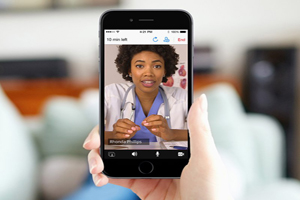
Gramin Health Based services
Gramin Health offers vital healthcare services in rural areas, providing medical consultations, diagnostics, and healthcare solutions. It focuses on improving health access in underserved communities..
Rural Health Services
Implementing health and entrepreneurship models.
TELEMEDICINE
Facility to TELEMEDICINE From SAMSA - | Samridh Sathi | Through TELEMEDICINE WORK IS EASILY BY SAMRIDH SATHI, THIS IS A RELIABLE INSTITUTION. You all should get the work done here and you all will be happy to get it done here. Because Samridh Sathi behaves friendly in the institution and also understands him. Telehealth, also referred to as telemedicine or e-medicine, is the remote delivery of healthcare services over the telecommunications infrastructure. Telehealth allows healthcare providers to evaluate, diagnose, inform and treat patients without an in-person visit. A typical telehealth exam involves downloading an application or calling a telehealth number, provided by a physician's office or patient's employer as part of health insurance benefits. After sharing information about medical history and symptoms, the remote patient will be connected to a clinician. Based on the clinician's evaluation, the call will end with the patient receiving further instructions, such as what over-the-counter or prescription medication to take, and whether they need a follow-up appointment. Types of telehealth Telehealth can be classified into four main categories that in some cases overlap. Interactive. Physicians and patients communicate in real time from patient's home or a designated medical kiosk. They can interact using phones or videoconferencing software that complies with the Health Insurance Portability and Accountability Act regulations. Remote patient monitoring. Telemonitoring lets patients monitor symptoms or their condition from their home. They use mobile health devices, such as wearable technology, and applications that collect data about temperature, blood sugar levels, blood pressure and other vital signs. Store and forward. Also known as asynchronous telehealth, this approach lets one healthcare provider share patient information, such as lab results, with another healthcare provider. Mobile. Mobile telehealth describes healthcare activities supported by mobile devices. This could be remote clinical services, such as consultations, and patient-doctor communication through mobile patient portals. It can also include public health activities, such as disseminating warnings about a dangerous outbreak. Advantages of telehealth Some of the benefits of telehealth for patients include the following: Convenience. Patients don't have to take time away from work for an appointment, and they save travel time and associated expenses, such as paying for gas and childcare. This can be useful for minor medical needs that don't require urgent care and for routine check-ins for patients with chronic conditions. Increased access. Patients in rural areas can obtain specialty health services, such a mental health treatment and post-surgery follow up, that they otherwise might not get without traveling a long distance for an in-person visit. Similarly, patients who live in federally designated underserved areas have increased access to primary, dental and mental healthcare. Patients who are unable to travel to an appointment because of their health condition can also receive care they might not otherwise get. Reduced exposure. Telehealth allows sick people to get healthcare without the risk of infecting others or becoming infected themselves..